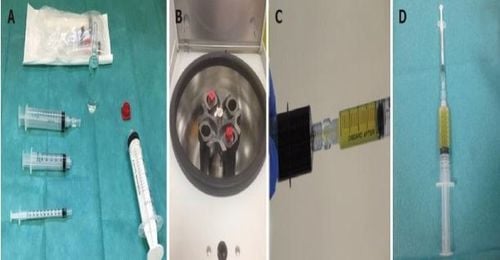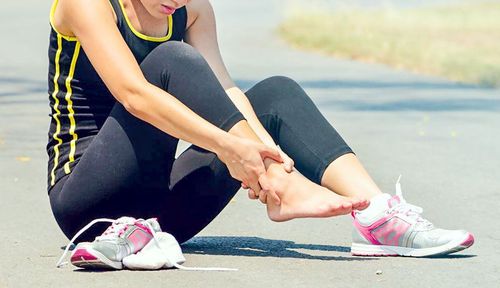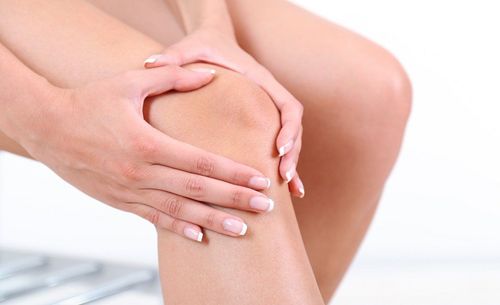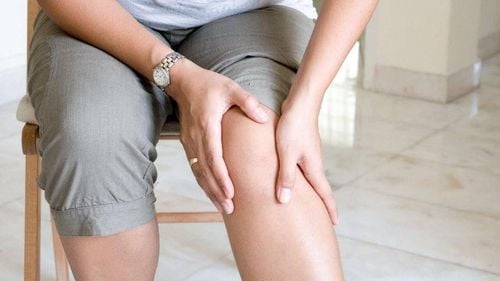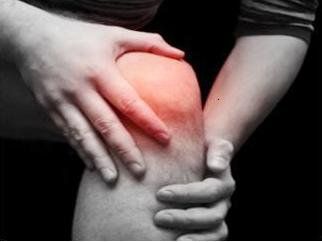This is an automatically translated article.
Post of MSc. Nguyen Dac Tu, Product Quality Evaluation Team Leader and MSc. Pham Thi Thanh, Product Quality Assessment Specialist, Vinmec
CNC Center
A rotator cuff tear is a partial or complete tear of the rotator cuff muscles of the shoulder joint. This is one of the common causes of shoulder pain, pain in the shoulder joint and pain that increases when moving the arm or when sleeping on the side of the injured shoulder. Shoulder rotator cuff tears often occur in people over 40 years of age, active workers or athletes who have to perform repetitive movements (javelin throwing, volleyball, basketball, etc.) swimming,...)
1. Causes and symptoms of rotator cuff tear
Causes of rotator cuff tears such as age factors, metabolic disorders, ischemia, degeneration and thinning of collagen fibers or trauma include acute trauma or minor but repeated micro-trauma many times again.
The main symptom of a rotator cuff tear is shoulder pain with pain on the outside of the shoulder joint spreading down the arm but not beyond the elbow, pain spreading to the neck and often at night, causing the patient to lose sleep. The more severe the shoulder pain, the more likely the injury is. The pain makes the patient unable to lie on the side of the affected shoulder, limited mobility, making it difficult to perform daily activities. In some cases of minor tears, symptoms may not be felt until an X-ray or MRI of the shoulder joint is performed.
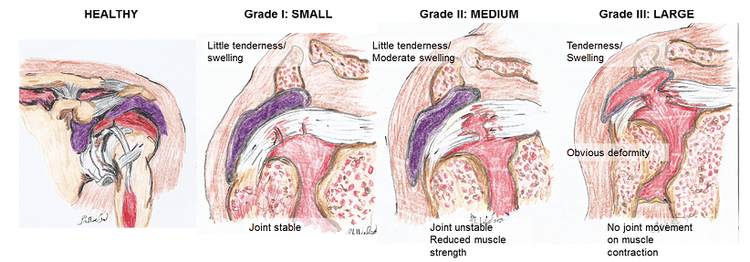
Hình 1: Các mức độ rách chóp xoay (từ trái sang phải: người khỏe mạnh, rách nhỏ, rách trung bình, rách nghiêm trọng)
Depending on the severity of the tear (Figure 1), use the appropriate treatment. Besides treatment methods such as rest, physical therapy, the use of analgesics, anti-inflammatory drugs (corticosteroid injections), surgical intervention is considered the gold standard in the treatment of rotator cuff tears.
Although surgery significantly improves the patient's condition, the recurrence of rotator cuff tears still accounts for a high rate of 34%-94%. Moreover, surgery often comes with many complications such as stiff shoulder, postoperative infection, long recovery time, especially for elderly patients. Studies show that the poor healing process of bone and tendon injuries is the cause of re-tear of the rotator cuff.
Application of autologous platelet-rich plasma (PRP) is one of the effective therapies for rotator cuff tears, promoting wound healing at the cellular level in the most natural way. The therapeutic effect of PRP is mentioned in the article "Application of platelet-rich plasma in the support and treatment of rotator cuff tears".
2. Some factors affect the treatment process
The aim of using platelet-rich plasma (PRP) is to reduce the recurrence of rotator cuff tears. Theoretically, PRP heals tendon damage by enhancing blood vessel formation at the site of injury. PRP contains high levels of platelets, which release large amounts of growth factors involved in many important processes such as blood clotting, wound healing, tissue regeneration. Therefore, PRP has been widely used in the treatment of injuries involving bones, cartilage, tendons or ligaments.
Treatment of a rotator cuff tear with PRP therapy may not be as successful as expected for a variety of reasons, but mainly factors related to the patient and the PRP product itself. In which:
Patient-related factors [1]:
Age Severity of lesion area: acute, chronic, tear according to levels (1, 2, 3...) patient's condition: whether or not previous treatment has been received, previous surgery performed, medication being used that affects treatment Rehabilitation plan or treatments Model related factor platelet-rich plasma [1]:
PRP product may be rich or poor in leukocyte composition Platelet content is too high or lower than mean peripheral blood platelet count PRP product activated or not activated PRP is injected in liquid form or used as fibrin glue Number of injections of PRP into the affected area: 1 or more injections Among the factors affecting the treatment of osteoarthritis in general With PRP therapy, age is the most important factor. In vitro and in vivo studies have demonstrated that PRP stimulates proliferation, differentiation and migration of many cell types involved in wound healing and tissue regeneration such as osteoblasts, osteoblasts, and osteoblasts. fibers, mesenchymal stem cells. However, in elderly patients the number of these cell types often decreases. Therefore, for PRP therapy to be highly effective in these patients, it should be combined with an exercise regimen [1].
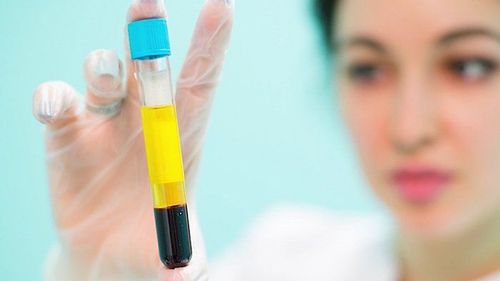
Ứng dụng huyết tương giàu tiểu cầu tự thân (PRP) điều trị rách chóp xoay
In 2020, Niazi et al reported the treatment of 30 patients with rotator cuff tear PRP injection. The results showed that PRP effectively reduced swelling and pain, improved the mobility of the shoulder joint, and had no complications. However, after 24 weeks of treatment, there was a slight decrease in tendon thickness. Kim's study evaluated the effectiveness of treatment for 30 patients with rotator cuff tear, divided into 2 groups, the group receiving PRP injection under ultrasound guidance and the control group (maintaining only appropriate exercise regimen). After 6 months, assessment of the thickness of the scapular tendon showed that the group treated with PRP had a slight decrease, while the control group had a slight increase. This result is explained by the fact that PRP is only injected once and for optimal effect, the research team proposes to treat rotator cuff tear by combining PRP with an appropriate exercise regimen. Therefore, depending on the severity of the rotator cuff tear, the number of PRP injections as well as the combined treatments will be adjusted accordingly.
In order to treat apical tear to the maximum effect, besides analyzing relevant factors such as age or treatment history of the patient, it is necessary to select an appropriate treatment method. Many studies have demonstrated that PRP therapy is as effective as surgery in treating partial rotator cuff tears. However, in case of severe tear, it is necessary to combine PRP (injection 2-3 times) with other treatment methods (surgery, corticosteroid injection, appropriate exercise regimen...). With a simple, low-cost, safe and effective procedure, PRP is one of the effective autologous therapies in the treatment of rotator cuff tears.
Vinmec Times City International General Hospital is the leading unit in the application of PRP platelet-rich plasma therapy. There is a team of doctors specializing in Orthopedics, Musculoskeletal, and they are also leading experts in the field of platelet-rich plasma application to treat bone and joint diseases, injuries, degeneration, especially a rotator cuff tear. In the period of 2018 - 2020, Vinmec has performed PRP treatment for nearly 1000 cases, with customer satisfaction results after treatment reaching more than 90%. PRP products at Vinmec are prepared in a clean room system that meets international standards ISO 14644-1, the preparation process uses a modern machinery system manufactured according to ISO 13485 process, and the PRP kit meets CE standards. - IVD. Therefore, it can be affirmed that the platelet-rich plasma therapy being provided by Vinmec Times City International Hospital is the safest and most effective product in Vietnam today.
Please dial HOTLINE for more information or register for an appointment HERE. Download MyVinmec app to make appointments faster and to manage your bookings easily.
References
Wang J.H.C, et al (2016), “Application of tendon stem/progenitor cells and platelet-rich plasma to treat tendon injuries”, Oper Tech Orthop, 26(2), 68-72. Niazi G.E, Hassan M.S, et al (2020). Ultrasound-guided injection of platelet rich plasma (PRP) in rotator cuff tendinopathy: effect on patients’ symptoms and supraspinatus tendon thickness. Egyptian Journal of Radiology and Nuclear Medicine . 51(1). Bergeson A.G, Tashjian R.Z, Greis P.E, et al (2012). Effects of platelet-rich fibrin matrix on repair integrity of at-risk rotator cuff tears. Am J Sports Med. 40, 286-293.




